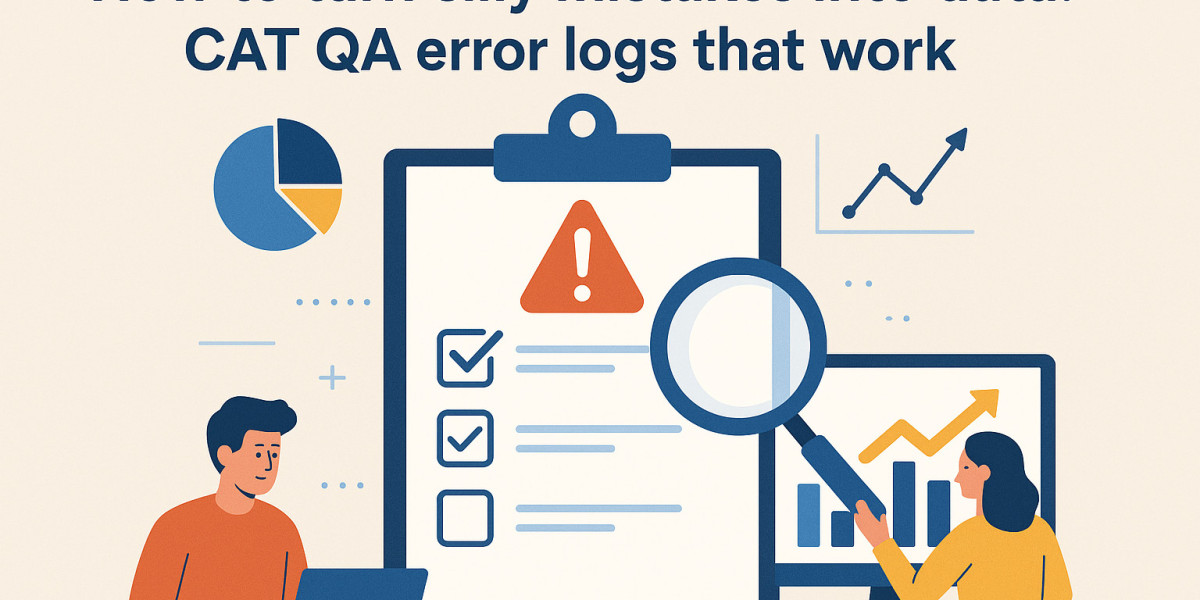Introduction
If you're preparing for the CAT exam in India, you've probably encountered silly mistakes that cost you marks in Quantitative Aptitude (QA). These small errors can snowball into major score setbacks. But what if you could turn those mistakes into actionable data? That’s where QA error logs come in. Creating and maintaining an effective error log can help you understand patterns, refine concepts, and boost your CAT QA accuracy.
What is a QA error log?
A QA error log is a structured document or spreadsheet where you record every mistake you make during your CAT practice sessions or mocks. It's not just a list of questions you got wrong—it's a system that helps you analyze why the error occurred and how to avoid it in the future. Given the evolving CAT exam pattern, maintaining such logs becomes even more essential to stay aligned with question trends.
Why silly mistakes matter
Silly mistakes are often brushed aside with a casual "I'll be more careful next time," but they reflect deeper issues such as:
Rushing through calculations
Misreading the question
Skipping crucial steps
Overconfidence in familiar topics
By logging these errors, you make them visible and manageable. With the CAT exam syllabus covering a vast range of topics, even simple errors can cost you significantly.
How to structure your QA error log
To turn your silly mistakes into meaningful data, your error log should include the following columns:
Date – When the mistake happened
Topic/Sub-topic – e.g., Arithmetic > Time-Speed-Distance
Question type – e.g., MCQ, TITA
Source – Mock test, sectional test, previous year paper
Mistake type – Conceptual, silly, misread, calculation, etc.
Explanation – What went wrong?
Correct approach – How should it have been solved?
Action point – What will you do differently next time?
Example entry
Date | Topic | Mistake Type | Explanation | Correct Approach | Action Point |
01-Aug-2025 | Algebra > Equations | Silly | Missed sign while simplifying equation | Carefully track signs during steps | Slow down and recheck signs |
How to use your error log effectively
Review Weekly: Set aside time every week to review your log and revise weak areas.
Look for Patterns: Do your silly mistakes cluster around certain topics or question types?
Test Retention: Reattempt the logged questions after a few weeks to check retention.
Refine Strategy: Adjust your mock test strategies based on insights from your log. This is especially useful as you get closer to the CAT exam date, helping you prioritize problem areas.
Benefits of using an error log
Improved Accuracy: Spotting repeated errors helps reduce them.
Better Time Management: Fewer silly mistakes mean less time wasted rechecking.
Stronger Conceptual Clarity: Understanding your error roots improves fundamentals.
Boosted Confidence: Progress becomes measurable and motivating.
Final thoughts
Turning silly mistakes into data is a mindset shift. It transforms frustration into feedback and anxiety into action. An error log is more than a correction tool—it’s a performance tracker and a self-coaching mechanism. If you’re serious about excelling in CAT QA, start logging your errors today. Along with filling out your CAT application form and covering the CAT exam syllabus, this practice will prepare you thoroughly. With the right strategy and attention to detail, you’ll be ready when the CAT exam date arrives.












